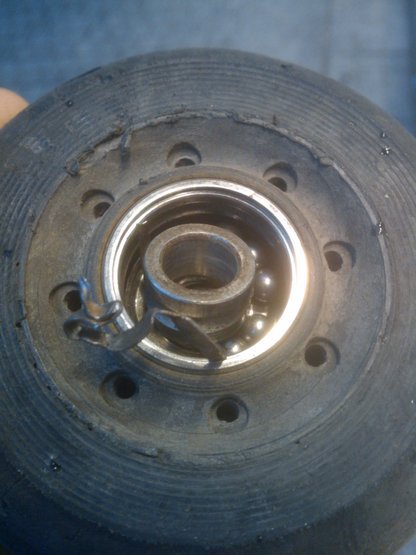Roller skates ball bearing maintainance tip of the day
Tuesday night, as I was lacing my skates before leaving the office, I was chatting with a colleague about roller-skate ball bearing maintenance and joking about riding my ball bearings to death. Actually, this is not a joke – I do ride them to death, as this photograph taken twenty minutes later attests.
When your ball bearings start looking like these – you may have waited too long before replacing them…
The good news is that when spilling their guts all over the pavement, ball bearings don’t seize too brutally – the inertia of my 94 kilograms helps a lot. But they do brake hard enough that powering on is not a realistic option … Consider yourself lucky if you don’t find yourself catapulted forward – your reflexes count less than the sheer luck of the event not affecting the front wheel.
My ball bearings lifecycle management process begins with the precious set of new ones reserved for racing. After a while, they are shifted to the long distance raid pool – where some performance must be counted on, but where time is not critical. Mediocre bearings from newly purchased skates enter at that stage. Later they end up in my urban skating pool, where constant shocks, humidity and utter lack of maintenance get the better of them after a few months of commuting – though some of them last much longer.
Sometimes the street soot accumulated after wet rides slows or even blocks rotation – but that is usually nothing that a good downhill ride won’t fix. At the end of their lives, the ball bearing are slack – I suspect that once they become slack they degrade exponentially.
I used to meticulously clean my ball bearings using this tedious method – but I no longer that that time as I don’t believe it is worth it. I recently discovered the Bont method of just shaking the ball bearings in petrol and two stroke oil at approximately 50:1 ratio and leaving them to dry on a towel… Now that is fast enough for me – I’ll try this method and see if I can extend my ball bearing’s life a bit.

Leave a Reply
You must be logged in to post a comment.